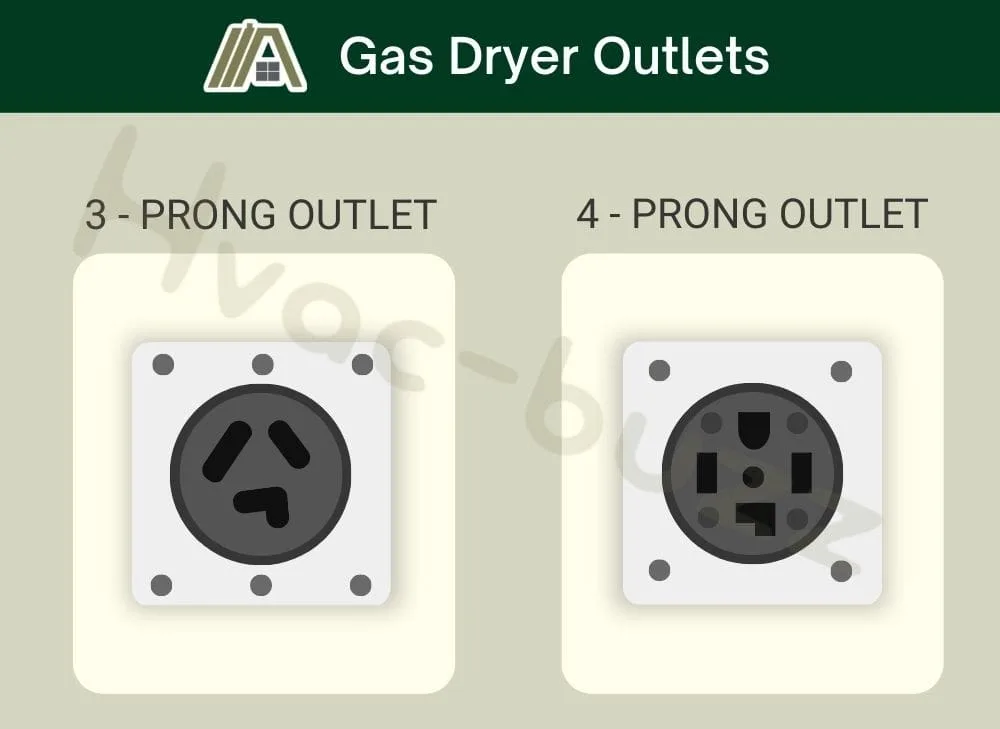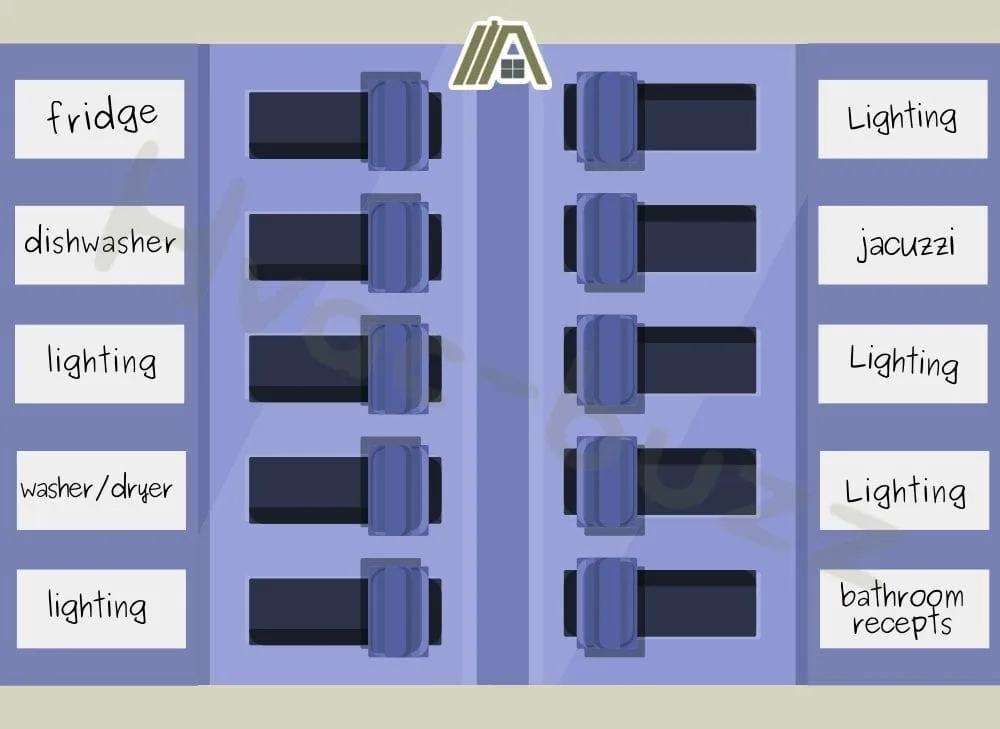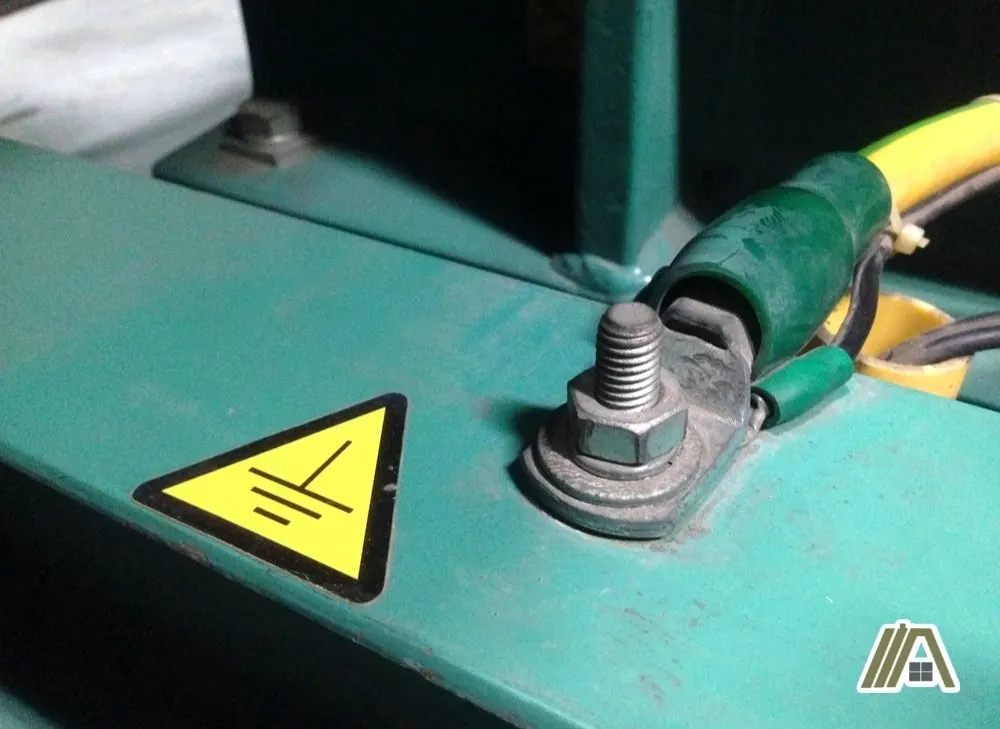It can be easy to forget that there is an electrical component to gas dryers. I know that I first think of the gas supply and safety requirements, but electricity is important too.
Because electricity is necessary for the machine, it is helpful to know about the electrical requirements of gas dryers. Of course, wiring and electrical connections must also be done right, so I have compiled a guide to clarify what you need to know.

Gas dryers require electricity to power the controls and motor in the machine and ignite the gas supply. It can be plugged into a regular 110/120V outlet (3-prong) since it doesn’t need a dedicated circuit and draws about 4 amps from the circuit. A gas dryer needs a 15 or 20A breaker.
What Requires Electrical Power?
In an electric dryer, everything, including the heating element, uses electricity. Electricity is still a necessary factor in how a gas dryer works. In a gas dryer, it is powering the controls and mechanisms in the machine.
The energy supply is what allows you to choose settings and programs for how the dryer runs for that cycle. This includes the timer, temperature setting, and spin.
The electrical supply is also essential to the gas assembly. Electricity runs the ignitor (pilot lights were phased out from about the 1970s), meaning it is needed to light the gas that produces heat for the dryer.
Once the ignitor is on, electrical signals then allow gas to flow through the valve into the burner housing.
Reasons Why a Gas Dryer Ignitor Will Not Glow (With Solutions)
It also powers the drum motor. Electrical signals get the motor moving, and this turns the driver pulley.
The dryer belt that goes around the drum is connected to the driver pulley and is how the drum rotates. This is important for aerating a load of clothing, allowing hot air to pass the wet material and evaporate the moisture.
Electricity is also needed for the blower and fan system that pulls air into the dryer and pushes the hot and humid air out through the exhaust vent. The gaseous byproducts from combustion are ejected this way as well.
Required Outlet Voltage
It is important to use the correct outlet to ensure that there is a sufficient energy supply that isn’t excessive, the appliance is properly earthed, and the wiring in the house and the appliance is safe.
Most of the electricity an electric dryer uses is directed to powering the heating element. Unfortunately, heating functions are notoriously heavy power users. This is why the dryer needs a dedicated 220/240V outlet. Although, some compact electric units are small enough to use a regular outlet.
However, a gas dryer uses gas to heat the air in the dryer. This means that a gas dryer only needs a regular 110/120V outlet since the voltage requirements of this version are no more than those of a minor appliance.
3- or 4- Prong Outlet?
If we are talking about receptacle outlets (don’t be confused by the terminology), we need to touch on the number of prongs on the receptacle.
There is a difference in the wiring between the 3-slot and 4-slot outlets.
- In a 3-slot outlet, the neutral and grounding wire share a single prone and receptacle slot.
- The 4-slot outlet has a separate prong for the neutral and earthing wires. This is to accommodate the larger electrical current that the circuit supplies and to make the appliance as safe as possible.

A gas dryer can use your standard 3-slot, 120V outlet. However, if you have an electric dryer (not compact), you need to use the 4-slot, 240V outlet.
Now, there is something to note here. If you have an older house built before 1996, you will likely find the outdated outlet design where three slots were used for both 120V and 240V outlets.
In 1996, the regulations changed, and the slot number became different. This means that you don’t always have an easy visual guide, so make sure the gas dryer is, in fact, in a 120V outlet.
Gas Dryer Circuit Amperage
Gas dryers typically have an amperage draw of ±6 amps. This is lower than the draw associated with electric dryers (which can go up to 30 amps!) and is, once again, tied to the fact that gas dryers don’t use as much power.
However, there are some brands that use up to 15 A.
Gas dryers, thus, can be accommodated by a circuit with a 110 V rating.
Since laundries are required to have a 20-amp circuit, according to Section 3703.3 of the International Residential Code (IRC), the dryer can easily be plugged into this 120 V circuit along with other appliances (unless the manufacturer instructs you to leave it on its own circuit).
If you are wondering about differences in outlets referred to as 110 V and those referred to as 120 V, the answer is no. Technically, the basic need for a circuit is 110 V or 220 V. The extra voltage to make up for losses and any other factors to make sure that the minimum voltage is truly available.
Must a Gas Dryer Be on Its Own Circuit?
The IRC covers circuits and feeders in Chapter 37, including the mention of several appliances that need a dedicated circuit. A gas dryer is not one of them.
Dedicated circuits are required when an appliance draws a lot of power, involves protection and safety functions and features, or is part of a security system.
A laundry is given its own circuit according to the IRC. However, this dedicated circuit can have more than one appliance connected to it, such as a gas dryer and a washer, since gas dryers don’t use much electricity and don’t meet the other requirements.

Some electric dryers use enough electricity that warrants putting them on a separate circuit.
You should always check the manufacturer’s instructions for installation and power supplies, but typically gas dryers don’t need special electric provisions.
Breaker Size for Gas Dryer
Circuit breakers are a safety feature that cut off electricity to a circuit if it reaches an unsafe level. This helps prevent overloading and electrical fires in the circuit and the appliances attached to the supply.
Is it important to have the correct breaker for the amps required by the dryer. If you use an overrated breaker, your dryer’s wiring will fry before the level of electricity that the breaker cuts out.
If you have an underrated breaker, the circuit will constantly trip the appliance, even though it was functioning normally and safely.
This will happen every time you try and use the machine since the standard power requirements to use the controls and for the burner to work will be too much for the breaker limits.
Dryers require different breaker sizes according to their voltage rating, which depends on the type of dryer you have. Gas dryers need a breaker of 15 or 20 amps.
Grounding Requirements for Gas Dryers
For several reasons, it is essential to earth appliances, including a dryer. Grounding helps prevent damage to the appliance, electrocution, electrical fires, and the danger associated with metals in the appliances.
Grounding wires help disperse electricity, removing excess electricity from the circuit without causing harm.

As I mentioned, the slots in a receptacle outlet are for different wires. You have active wires that supply power to the appliance, neutral wires that return power to the circuit, and grounding wires that channel any unsafe and unwanted electricity into the ground.
So, grounding your gas dryer occurs at the outlet if the grounding wire is connected and if you connect the plug to the right circuit. If there are any specific grounding requirements for the machine, they will be detailed in the installation manual.
It is important to use the correct outlet (110/120V) for your dryer to ensure that there is sufficient electricity for the machine and that the grounding feature can handle the amount of power that can get to the appliance.
